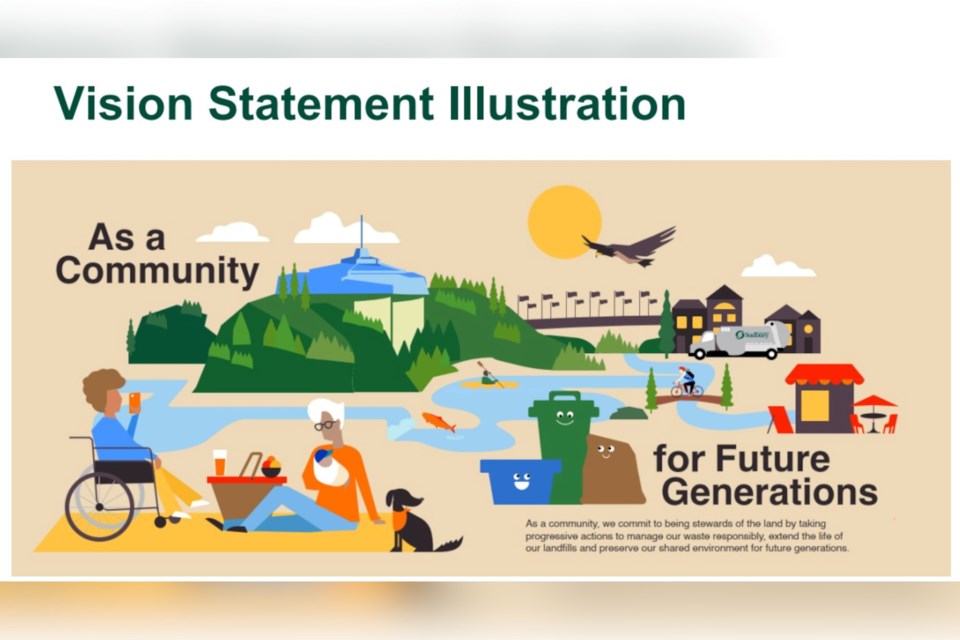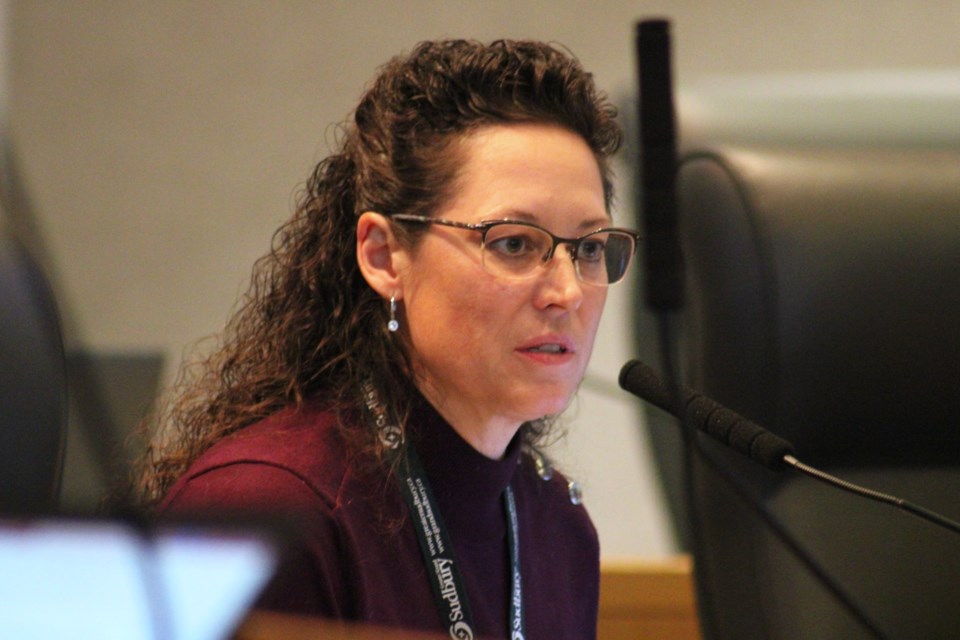Clear garbage bags were a key topic of discussion during Monday’s operations committee meeting of city council, during which some elected officials expressed concern.
On the table were 18 options Dillon Consulting partner Betsy Varghese presented as part of the proposed Greater Sudbury Sustainable Waste Strategy, which will establish goals for the city’s 10-year horizon and is slated to be tabled later this year.
The requirement that Greater Sudburians use clear garbage bags was Option No. 3, and at 50-per-cent support received the lowest public backing of any of the 18 options.
(This public survey should be taken with a grain of salt because it was opt-in and not randomized so is not statistically relevant to the general public.)
“I don’t think we’re going to be anywhere near there with the broader population,” Ward 5 Coun. Mike Parent told the committee, adding, “It’s going to be problematic to get the support.”
Other elected officials lodged similar concerns, with Ward 4 Coun. Pauline Fortin disagreeing with the punitive nature of the city declining to pick up garbage with too many divertable items. Past concerns have also related to privacy.
According to Varghese’s presentation, “Residents will initially be provided with information on where to purchase clear bags for garbage, and data will be gathered to assess the impact of the program. Promotion and education along with enforcement will be required initially.”

Some other key details of the proposed clear garbage bag requirement are:
- Small opaque privacy bags would be allowed within each larger clear bag.
- The city would work with retailers to ensure clear bags are widely available.
- Thresholds would be established for unacceptable divertible content observed in clear bags before pickup is refused, with extra leniency around these thresholds as the program is first rolled out, including thorough warnings.
“It’s not that we want to not pick up the waste or limit waste pickup, but just put it in the right place,” city Environmental Services director Renee Brownlee told the committee.
In a recent audit of household garbage collection, she said that households with both blue and green cart curbside collection were throwing away waste that could have been diverted. They found that approximately 26 per cent of what ended up in these residents’ garbage bins could have been diverted.
Various other Ontario municipalities have taken on clear garbage bag policies, Varghese said, including Markham, Cornwall, Peterborough, Kawartha Lakes, Orillia, and Orangeville.
No decisions were made this week regarding clear garbage bags or any of the other 17 options tabled, with a final proposed Solid Waste Management Master Plan to be tabled later this year.
“There are a lot of good things in this plan that not only align with our strategic plan but they help progress our efforts in our Community Energy and Emissions Plan,” Brownlee said, later clarifying that municipal finances are closely linked to these efforts.
With the cost of new landfill sites hitting hundreds of millions of dollars, she said the city has a vested financial interest in extending the life of their existing landfill facilities.
Another notable option in the city’s Sustainable Waste Strategy is No. 6, which proposes an automated cart-based collection program (where carts are emptied using a mechanical arm on the collection vehicle) for garbage pickup, which received more than 70 per cent of public support in Dillon Consulting’s survey.
Automated pickup would not take place until at least 2028, at which time the city’s current collection contract will expire with a possible one-year extension.
The full list of 18 options (including condensed descriptions) include:
- Option 1: Create local circular economy opportunities and markets
- Brainstorm and provide support to local innovators and organizations to attract more businesses to establish markets for materials currently wasted. One example is mattress recycling, for which there’s currently no program in Northern Ontario.
- Option 2: Recovery of waste management costs
- Study how to recover costs and increase diversion and save valuable landfill space, including a partial user-pay system for roadside collection and whether tipping fee holidays should be eliminated.
- Option 3: Clear Garbage Bag program
- Require both residential and non-residential customers to use clear garbage bags to identify materials which could be diverted from the landfill.
- Option 4: Enhance roadside collection
- Collection programs for targeted materials, including textiles and batteries.
- Option 5: Bulky collection program service review
- Assess current service standards, including the cost of existing services.
- Option 6: Preferred future collection system
- This could include such things as automated pickup.
- Option 7: Enhance waste diversion at municipal facilities
- Develop guidelines wherein consistent containers are purchased for indoor and outdoor use and a database of participating facilities.
- Option 8: Conduct waste quantity and composition studies
- Waste audits will help gather information on municipal services.
- Option 9: Enhance customer service delivery through technology
- Use technology to improve data for monitoring and reporting purposes and increased safety.
- Option 10: Diversion tool kits for high density residential and Industrial, commercial and institutional non-residential sectors
- Produce promotion and educational resources, including guidelines and tips for reducing contamination.
- Option 11: Review leaf and yard trimming collection program
- Remove grass clippings as an acceptable item in the leaf and yard trimming collection program and adjust collections.
- Option 12: Organic waste processing and funding
- Review options for organics processing.
- Option 13: Increase organics collection from non-residential sector
- Potentially adjust user fees and implement a bylaw to increase participation.
- Option 14: Increase organics collection from high density residential buildings
- Review building standards and existing fees to develop a process for high-density residential buildings to receive organics collection services
- Option 15: Pilot separate dog waste collection
- Provide a separate receptacle by roadside litter containers for dog waste.
- Option 16: Litter and illegal dumping strategy
- Option 17: Landfill operations enhancements
- Finalize designs for traffic flow to reduce wait times and idling.
- Option 18: Reduce greenhouse gas emissions at landfills
- Undertake a pilot project at a closed landfill site to test the effectiveness of a passive biosystem to reduce landfill methane emissions.
Tyler Clarke covers city hall and political affairs for Sudbury.com.
